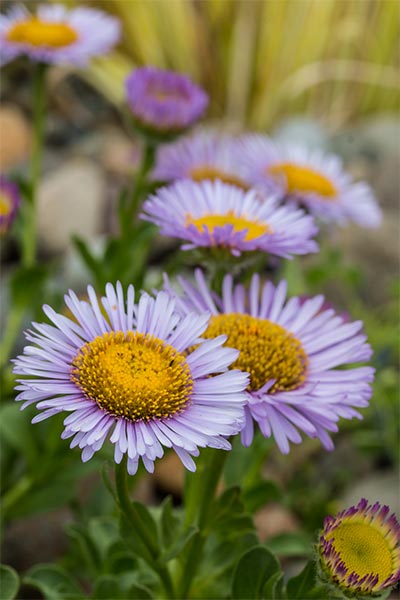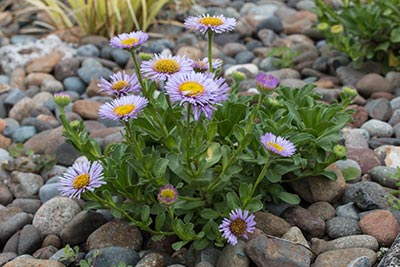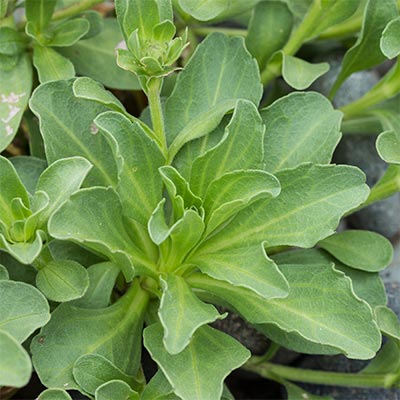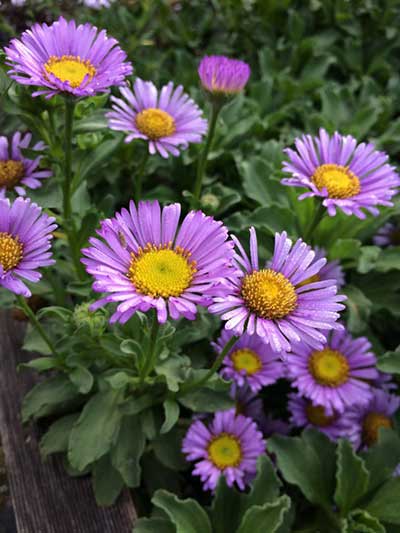Seaside Daisy
- Scientific Name: Erigeron glaucus
- Garden: Natives Garden, Rain Garden
- Plant Type: Herbaceous Perennials
- Evergreen/Deciduous: Evergreen
- Sun/Shade Exposure: Full Sun
- Moisture Requirements: Dry
Plant Information
Erigeron are our native wild daisies. There are several species found on both sides of the Cascades, from coastal rocky bluffs to sub-alpine meadows. They are relatively care-free, rewarding the home gardener with an abundance of lavender, pink, white or yellow jewel-like rays of petals surrounding a bright yellow center, blooming from mid spring until fall. Like their related asters and daisies, Erigeron are great for a butterfly garden; all provide nectar for several butterfly species, including the rare Oregon Silverspot and Fenders Blue butterflies. Of the several native species found in the wild, there are three species that are readily available to the retail nursery trade, one coastal and low-growing and the other a taller form native to sub-alpine meadows in this region. Erigeron glaucus: Seaside Daisy Slightly succulent leaves that give off a light balsam scent when bruised, Erigeron glaucus wants little to do with shady spots, and is ideal as a rock garden or container plant because of its need for perfect drainage (note that in the wild it lives its life on rocky coastal outcroppings). Happy with rich soil and dry winters (containers that can be pulled under cover when the winter rains arrive, or that well-drained rock garden); when the moisture/drainage balance is met, Erigeron glaucus is a virtually trouble-free, abundantly rewarding native perennial. Spreading by short rhizomes, it tops out at only about 4 inches in height, making it a good candidate for the front of a sunny border.
Data Source
https://www.portlandnursery.comPlant Photos









